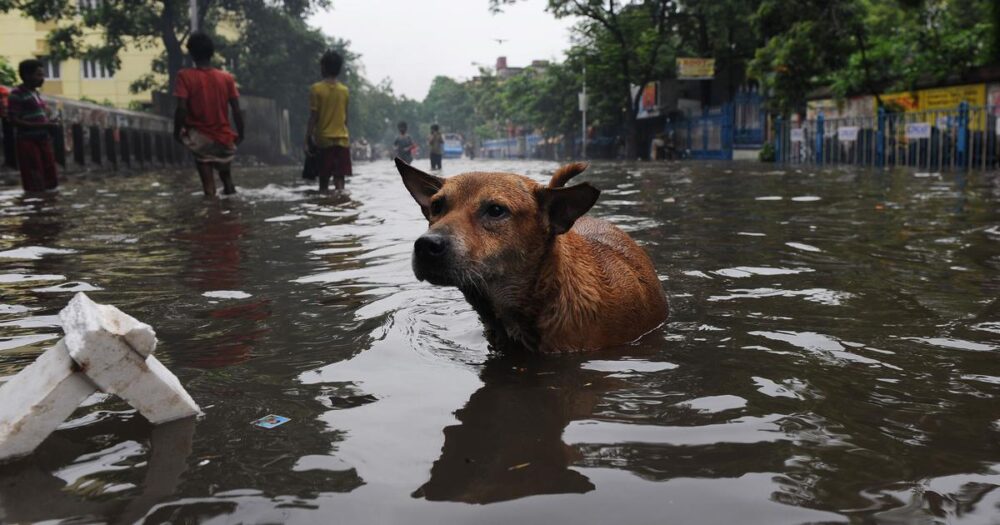The Delhi High Court in 2011 passed an order for the protection of stray dogs, asking the police to provide protection to dogs and dog feeders, making it a punishable offence if anyone restricts, prohibits, or causes inconvenience to any person feeding a street dog. Resorting to remove or dislocate or kill dogs will also be a punishable offence.
This upholding has made little difference to the treatment meted out to stray dogs. They are exposed to harsh conditions and are more prone to picking up diseases. Many risks the chances of catching rabies from tier bite and owing to such reasons, a lot of people end up harming them and in worst cases, killing them.

Rights of Stray Dogs
Generally perceived as aggressive, stray dogs are neglected, leaving them to relocate and change territories in search of food. Vacated territories are taken up by new dogs.
Article 51A(g) of the Constitution of India imposes a duty on all citizens of India to “protect & improve the natural environment including forests, lakes, rivers, and wildlife, and to have compassion for living creatures.”
Article 48-A of the Constitution, also mandates the State to “endeavor to protect and improve the environment and safeguard forests and wildlife of the country.”
Hence, stray dogs come within the purview of Article 51A(g) with following rights guaranteed to them:
-Right to be protected.
-Right to be shown compassion, is constitutionally guaranteed.
-Right to be free from all forms of cruelty.
-Right to be fed.
-Right to not be removed or relocated from their territories.
Other Animal Rights under the Constitution of India
A number of laws on protection of animals against cruelty have been enacted, which includes the following:
Section 11 of Prevention of Cruelty to Animals Act criminalizes “all animal cruelty”, which is punishable by fine and imprisonment.
Section 428 and 429 of the Indian Penal Code imposes punishment on persons who carry out acts of dislocation, abduction and cruelty towards community animals.
Section 503 of IPC 1860 states that anyone who threatens or intimidates any person taking care of dogs is liable for criminal intimidation under this section and can be arrested without a warrant.
Section 506 states that it is a crime to threaten, abuse or harass neighbors who feed animals. The Animal Welfare Board in March, 2008, and the Ministry of Public Grievances have issued notifications which provide immunity to persons who feed animals.
Section 73 to 79 and 99 of the Delhi Police Act 1968, gives special powers to police to take action when an animal offence has been committed.
The Environment (Protection) Act, 1986 and Wildlife (Protection) Act also have provisions protecting stray dogs against cruelty.
Stray Dog Management Rules, 2001 makes it illegal to remove or relocate dogs from their territory. The Rules mandates that sterilized and vaccinated dogs should be returned to the same area from where they were picked. They cannot be removed from the municipality.
The Animal Birth Control (Dog) Rules, 2001, makes provision for the sterilization and vaccination of stray dog, as a means of eliminating rabies, as well as a solution for reducing stray dog populations. The Rules also prohibits the act of driving a stray dog out of one area into another.
Even with these existing laws, the situation of stray dogs in India remains grim, with not a single state having a fully-functioning animal welfare board.
Protection of Stray Dogs
An inclusive approach should be opted for protection of stray dogs drawing collective responsibility of people and authorities of the state.
To effectively eliminate the risk of rabies, the World Health Organization (W.H.O) have recommended systematic sterilization and vaccination of stray dogs within a vicinity should be strictly implemented.
Another measure highly recommended by WHO is adoption of stray dogs. This will also result in decreasing their number. To reduce the risk of sterilized/vaccinated dogs getting into areas with high risk diseases, elimination of relocating stray dogs should be take care of.
People should make sure to feed stray dogs. This will also help in preventing dogs to change territories in search for food/shelter.
Also read:
Animals To Get Safe Passage On The Delhi-Mumbai E-Way
7 Super Cute Animals That Are Actually Deadly Dangerous
For more, like us on Facebook or follow us on Twitter, Instagram and Telegram